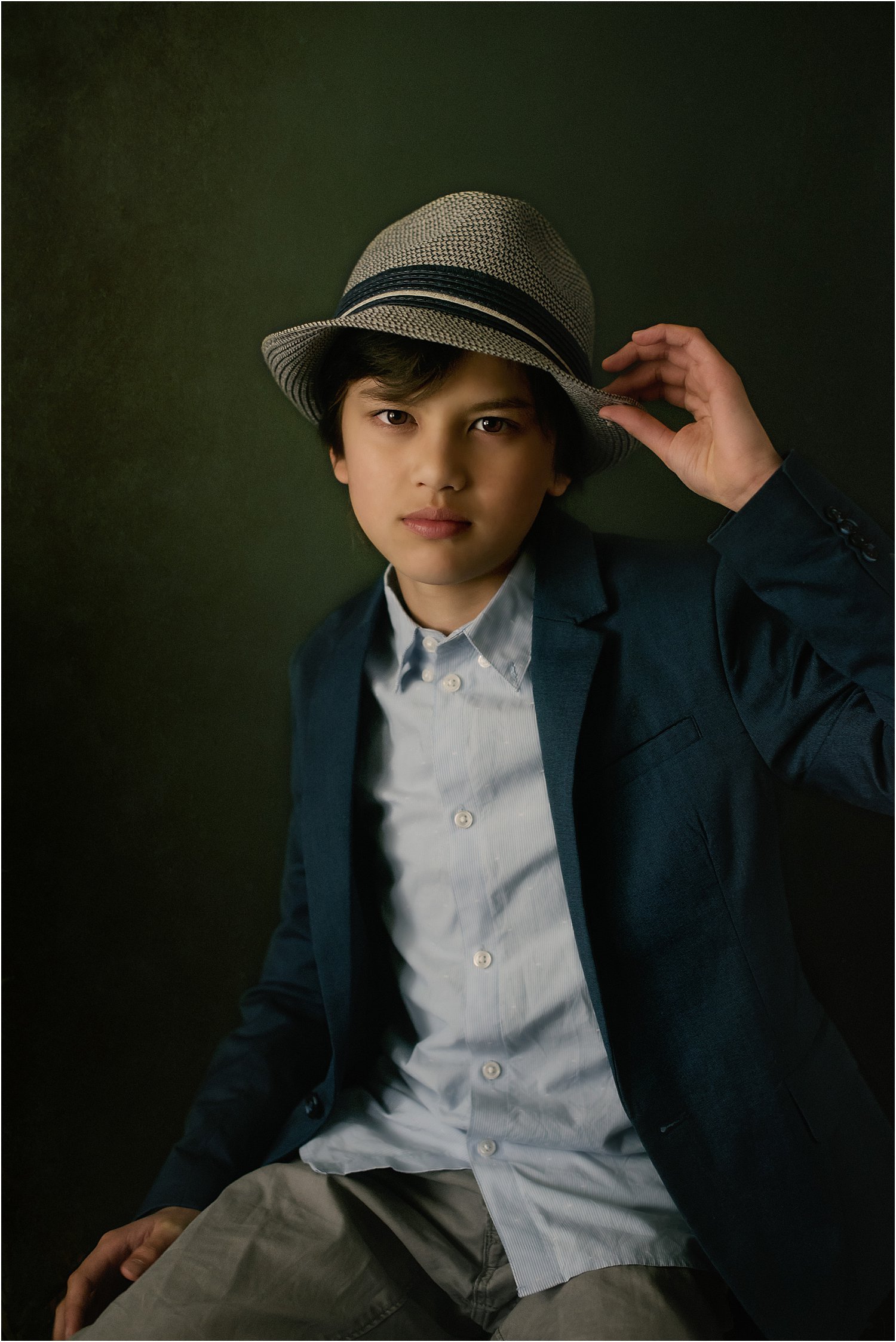The post 3 Quick Tips for Achieving Moody Portraits with Natural Light appeared first on Digital Photography School. It was authored by Lily Sawyer.
If, like me, you are drawn to moody portraits and have been wondering how to take them, read on. Achieving moody portraits with natural light can be quite simple. I hope this takes the mystery our of dark moody portraits in natural light.
Before you start, plan your photo shoot first by keeping the following in mind: mood, tones (light or dark), outfits (colors to complement the tones), and the time of day to shoot. This may not make a difference to you, but to me, with my window north-east facing, I know I get decent light between 10am and 2pm, and after that, light availability deteriorates. This is the limitation of shooting with natural light. You are dependent on the amount and quality of the available light.
1. The importance of background
The easiest way to achieve a natural light moody portrait is by using a medium to dark background. The darkness of the background adds depth and the illusion of space and getting drawn into it. In effect, it also gives the illusion of a three-dimensional space. Not only that, but it also helps provide contrast between the background and the face of the subject which you want to emphasize and focus on. You draw the viewer’s eye to the image, and the background effectively provides context and setting.
There are various types of backgrounds: plain solid color, textured, scenery, and patterns such as wallpaper. Choose one that doesn’t clash with your subject (unless clashing is your intention) so that the portrait subject is the star of the show and the background is just that – background.
With a plain background, you can always add texture in post-production and change the tones up if you wish. Below is a side-by-side comparison of the photo without texture (left) and with a warm texture added (right).
2. The importance of lighting
Because we are limiting ourselves to available natural light, it is a good idea to work with it. In most spaces, especially in homes, natural light comes from a 45-degree angle streaming from a window unless you have skylights in which case light comes from the top. You would want to cover that skylight and limit yourself to one light source coming from one direction, preferably 45-degree angle from the side. You want to place your subject in such a spot where the light hits them at this angle. Beware of placing the subject too close to the window as this tends to illuminate the face too much.
You want just a small amount of light touching the subject to achieve that ambiance and mood you are after. Before you shoot, look at the shadows on the face and especially under the nose. Position your subject by moving them around adjusting to the light and how the shadows fall on the face.
From a 45-degree angle window lighting where the window is higher than the subject, shadows on the face get cast at a slightly downward angle to the side opposite the light source. This is felt to be a pleasing shadow and is also known as the Rembrandt lighting. I have written an article touching on this with both natural and artificial lights on here.
With Rembrandt lighting, you need a reflector positioned on the opposite side of the light. The aim is to reflect some of the window light back onto the subject’s face, so you get a softer gradation of shadows instead of a very sharp drop from light to dark. If you don’t have a reflector, you can use a white sheet or white piece of cardboard.
Reflectors come in different colors which cast a tint on the face so choose carefully. See here for a side-by-side comparison of what different types of reflectors do.
3. The importance of light diffusion
Diffusion is passing the light source through a translucent material so that the light is spread out instead of coming from a concentrated source. Once spread, it touches the subject more softly thus removing the harshness of otherwise undiffused light.
One can argue that, on a cloudy day, available natural light coming from a window is already diffused by the great big clouds above. I agree with this. However, if you have the option to diffuse, I would still do it. On a sunny day where the light is powerful, I would say diffusion is an absolute must.
In the photo above, the window light is frosted at the bottom and covered in a voile fabric at the top thereby acting as a diffuser. From my experience of shooting for more than a decade, I have learned to see the difference between undiffused and diffused light and the former is definitely softer and better for the skin.
Overall, it’s a factor that contributes to achieving the type of moody portrait I am aiming for in this shoot.
I hope you found this helpful! Do share your moody portraits here and any tips you have too!
The post 3 Quick Tips for Achieving Moody Portraits with Natural Light appeared first on Digital Photography School. It was authored by Lily Sawyer.






Comments are disabled for this post.